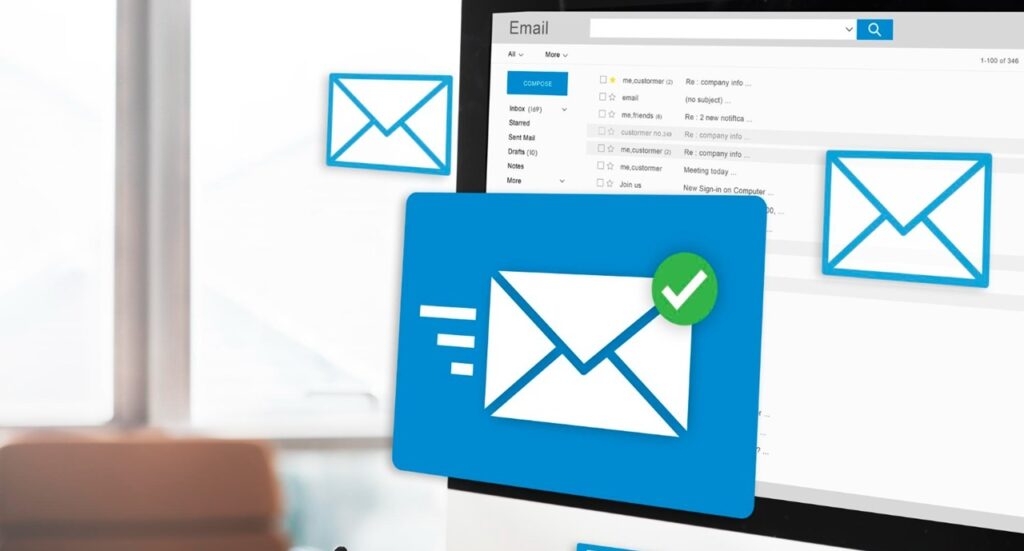Guest posting remains one of the most effective strategies for SEO and content marketing. But even the best-written outreach email can fall flat if the subject line doesn’t prompt the recipient to open it. That’s why your guest post outreach subject line matters as much—if not more—than your pitch itself.
In this comprehensive guide, we’ll cover 15 of the best guest post outreach email subject line examples that can dramatically increase your open rates. Each example comes with insights into why it works, the psychology behind it, and when to use it.
1. Guest Post Idea for [Blog Name]
This is the classic, go-to subject line that’s straight to the point. It tells the recipient exactly what to expect and feels personal when you include the blog’s name.
Why it works:
- Clarity wins. Editors don’t have time to guess.
- Including the blog’s name personalizes the message.
When to use it:
- When contacting niche blogs or when you want to avoid clickbait tactics.
2. I’d Love to Contribute to [Blog Name]
This subject line feels friendly, humble, and honest.
Why it works:
- It shows admiration without sounding spammy.
- It reads like a genuine collaboration request.
When to use it:
- When reaching out to mid-tier blogs or personal blogs run by a single author.
3. Quick Post Idea for [Topic] – What Do You Think?
By asking a question and referencing a topic relevant to their blog, you invite curiosity and show you’ve done your homework.
Why it works:
- Questions trigger curiosity.
- It highlights your respect for their editorial standards.
When to use it:
- When proposing time-sensitive or trending topic posts.
4. Contributor Request: Unique Article on [Specific Topic]
Adding “Contributor Request” positions your email as a professional inquiry, especially when combined with a unique angle.
Why it works:
- Feels professional and editorial.
- “Unique Article” adds perceived value.
When to use it:
- For higher-authority blogs or magazine-style publications.

5. Can I Write for You About [Specific Niche]?
This subject line reads like a soft ask—non-pushy and personalized to their niche.
Why it works:
- Appeals to smaller bloggers or niche websites.
- Doesn’t trigger defensive spam filters.
When to use it:
- When contacting newer websites or blog owners with specific expertise.
6. I Have 3 Fresh Article Ideas for [Blog Name]
Giving a number of ideas upfront suggests you’re proactive and prepared.
Why it works:
- Numbers create structure and expectations.
- “Fresh” implies relevance and originality.
When to use it:
- When pitching evergreen content to content-heavy sites.
7. Looking to Collaborate: Original Article for [Site Name]
This subject line positions you as a partner, not a beggar.
Why it works:
- “Collaborate” changes the power dynamic.
- Suggests a mutual benefit rather than a favor.
When to use it:
- When reaching out to professional publications or SaaS blogs.
8. Loved Your Post on [Topic] – Here’s an Idea You Might Like
Referring to a specific post shows genuine interest and research.
Why it works:
- Personal connection improves engagement.
- Compliment + proposal is a great psychological combo.
When to use it:
- After reading and engaging with their blog content.
9. From a Fellow [Niche] Enthusiast – Guest Post Proposal
Shared interest makes the pitch feel less transactional and more like a community interaction.
Why it works:
- Humanizes your identity.
- Appeals to the blog owner’s passion.
When to use it:
- For blogs in niche communities like fitness, crypto, or parenting.

10. Guest Article: Ready-to-Publish Post on [Topic]
This subject line implies reduced effort for the editor—your post is ready to go.
Why it works:
- Editors love plug-and-play content.
- Reduces mental friction for a busy recipient.
When to use it:
- When you already have a draft or completed article.
11. I Wrote This Just for [Blog Name] – Would You Consider It?
Flattery combined with exclusivity is a strong emotional hook.
Why it works:
- “Just for you” creates a sense of privilege.
- Builds intrigue and appreciation.
When to use it:
- When reaching out to medium-to-high-authority blogs.
12. Content Collaboration Idea for [Blog Name]
This subject implies more than a one-off post—it suggests a partnership or ongoing contribution.
Why it works:
- “Collaboration” feels like a business opportunity.
- Broad enough to encompass guest posting or co-marketing.
When to use it:
- With content agencies or marketing-savvy blogs.
13. Potential Contribution for [Blog Name] – High-Value Content
This positions your pitch as premium and worth attention.
Why it works:
- “High-value” hints at substance and originality.
- Signals you’re not offering spun or low-effort content.
When to use it:
- When you want to appear as a serious content marketer.
14. Open to Contributors? I’d Love to Write for You
It’s a light-touch, respectful ask that puts the editor in control.
Why it works:
- Asks for permission, not attention.
- Avoids aggressive language or promises.
When to use it:
- When unsure if the blog accepts guest posts.

15. Can I Contribute to [Site Name]? (I’ll Make It Worth Your Time)
This subject line uses curiosity and value as its levers.
Why it works:
- The parenthetical phrase is conversational and compelling.
- Sounds like a confident yet humble offer.
When to use it:
- With influential bloggers who don’t usually accept guest posts.
16. “Would You Be Open to a Guest Post on [Topic]?”
This subject line is polite, non-intrusive, and seeks consent.
Why it works:
- Shows respect for the editor’s time and policies.
- Feels personalized and collaborative.
When to use it:
- Ideal for reaching out to blogs that don’t publicly advertise guest posting options.
17. “One Guest Post, Three Benefits for [Site Name]”
Using numbers creates structure and promise, while “benefits” emphasizes value.
Why it works:
- The reader anticipates concrete takeaways.
- Positions your content as a win for them.
When to use it:
- When pitching content that adds SEO value or social shares.
18. “[First Name], Can I Share Something Great with Your Readers?”
This subject line uses personalization and curiosity together.
Why it works:
- Feels conversational and specific.
- “Great” builds curiosity without being vague.
When to use it:
- When you know the editor’s name and want to stand out in a crowded inbox.
19. “Pitching a Post Idea Your Audience Will Love”
Focuses on the recipient’s readers, not just your content.
Why it works:
- Audience-first messaging resonates with blog owners.
- Sounds confident and well-aligned.
When to use it:
- When pitching content that ties into user interests or trends.

20. “Have Time for One More Guest Post This Month?”
Creates urgency and gently encourages a yes.
Why it works:
- Suggests low effort and a ready-to-go article.
- Subtle time framing triggers action.
When to use it:
- Mid-month, or when editors are planning next month’s content.
21. “Boost Your Content Calendar with This Guest Post Idea”
Helps editors see you as part of their workflow.
Why it works:
- Speaks their language (content planning).
- Implies that you’re solving a problem for them.
When to use it:
- When targeting marketing, business, or editorial blogs.
22. “High-Quality Guest Post for Your Blog – Interested?”
This subject line positions your article as valuable from the start.
Why it works:
- “High-quality” signals professionalism.
- Keeps the ask clear and concise.
When to use it:
- When pitching sites that emphasize editorial standards.
23. “Guest Contributor Opportunity: Let’s Collaborate”
This frames your outreach as a mutual opportunity.
Why it works:
- “Let’s” implies partnership.
- Sounds friendly yet professional.
When to use it:
- When contacting other content marketers, agencies, or SaaS blogs.
24. “Unique Article Idea for [Topic] – Ready to Share!”
Tells them your content is unique and available immediately.
Why it works:
- Editors love timely and exclusive content.
- “Ready to share” reduces friction.
When to use it:
- When you want to appear proactive and prepared.

25. “Article Idea for [Site Name]: Quick Read, Big Impact”
Positions your piece as brief yet valuable.
Why it works:
- Highlights scannability and usefulness.
- Appeals to blogs with fast-paced readers.
When to use it:
- When pitching tips, how-tos, or listicles.
26. “Would [Blog Name] Be Interested in This [Topic] Idea?”
Phrased as a genuine question, this invites engagement.
Why it works:
- Encourages a simple yes or no reply.
- Feels like you’re offering, not begging.
When to use it:
- When cold-emailing new blogs or solo bloggers.
27. “I Have a Value-Packed Post Your Readers Will Appreciate”
Focus on value for the audience—a winning formula.
Why it works:
- Value is a strong motivator.
- “Readers will appreciate” ties your pitch to their brand mission.
When to use it:
- Lifestyle, wellness, parenting, or personal finance blogs.
28. “Relevant, Actionable, and Original – Guest Post Inside”
Each word builds trust in the content’s quality.
Why it works:
- Editors are always on the lookout for actionable, relevant content.
- Lists benefits clearly in a single line.
When to use it:
- When contacting content-heavy sites with high standards.
29. “Thought You’d Like This Content Idea for [Your Blog]”
This subject line feels like a thoughtful share, not a pitch.
Why it works:
- Sounds like it came from a peer, not a marketer.
- Light tone = higher open rates.
When to use it:
- Casual blogs or personal brands.

30. “Here’s a Guest Post Idea That’s Already Getting Engagement”
Social proof builds instant interest.
Why it works:
- Suggests the topic is already proven to resonate.
- Implies performance-based value.
When to use it:
- When reworking content that’s gone viral or performed well elsewhere.
Best Practices for Guest Post Outreach Subject Lines
Here are some key takeaways to help you write your own high-performing guest post subject lines:
✅ Personalization Wins
Use the recipient’s name or blog title. Mention a specific post or topic. Show that you’ve researched their content.
✅ Keep It Short and Direct
Aim for 6–10 words or under 60 characters. Long subject lines often get cut off, especially on mobile devices.
✅ Add Value in the Subject Line
Use terms like:
- “Fresh ideas”
- “Unique perspective”
- “High-value content”
- “Exclusive for you”
These help make your pitch irresistible.
✅ Test and Track Your Open Rates
Use outreach tools like Mailshake, Pitchbox, or Hunter Campaigns that allow A/B testing of subject lines. Monitor what works and optimize accordingly.
✅ Avoid Spam Triggers
Stay away from overused or suspicious phrases like:
- “Guaranteed traffic”
- “FREE post”
- “No cost to you”
They make your email look like a scam, even if it’s not.
Final Thoughts
The right subject line is your golden ticket into an editor’s inbox. It’s your first impression—and often your only chance to make one. The subject lines you use should be short, clear, personal, and focused on value.
While the 15 examples in this article are proven performers, you should always tailor them to your voice, niche, and the specific blog you’re pitching. Craft them with the same care you’d put into your guest post itself—and you’ll start landing more placements with less effort.
